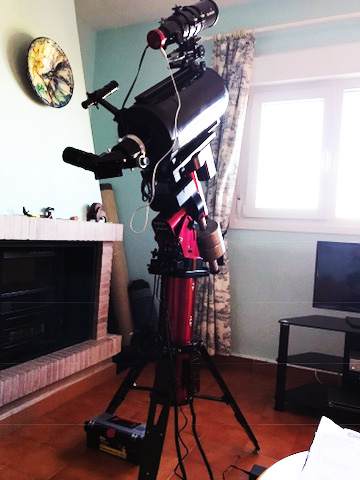Frank Acfield's Jupiter from 1 year ago.
 Monday, April 14, 2014 at 9:28PM
Monday, April 14, 2014 at 9:28PM As Jupiter is still a bright object at the moment I thought I would look back to 1969 and Frank Acfield's lecture notes that I recorded on his course that year.
JUPITER
Lecture No. 9
I thought it would be interesting to compare the 1969 details for Jupiter from Frank with the more up to date details from his friend Patrick Moore in the Astronomy Data Book published in 2010.
The mean distance of Jupiter quoted in miles in 1969 is given in the Data Book as 778 340 000 km. This converts to 483638052miles so that is identical!
The Equatorial Diameter is given as 88,700 miles above and 142,884km in the Data Book which is 88784miles - no change there either.!
Identical values to the above in the Data Book
The Data Book gives an orbital inclination of 1 degree 18 minutes and 15.8 seconds so a slight difference there but the axial inclination is the same.
The image below from SkyX confirms the opposition date given above - I had set the date to the same day in SkyX - clearly Jupiter is in opposition.
To be continued..........
 [Your Name Here] | Comments Off |
[Your Name Here] | Comments Off | 







